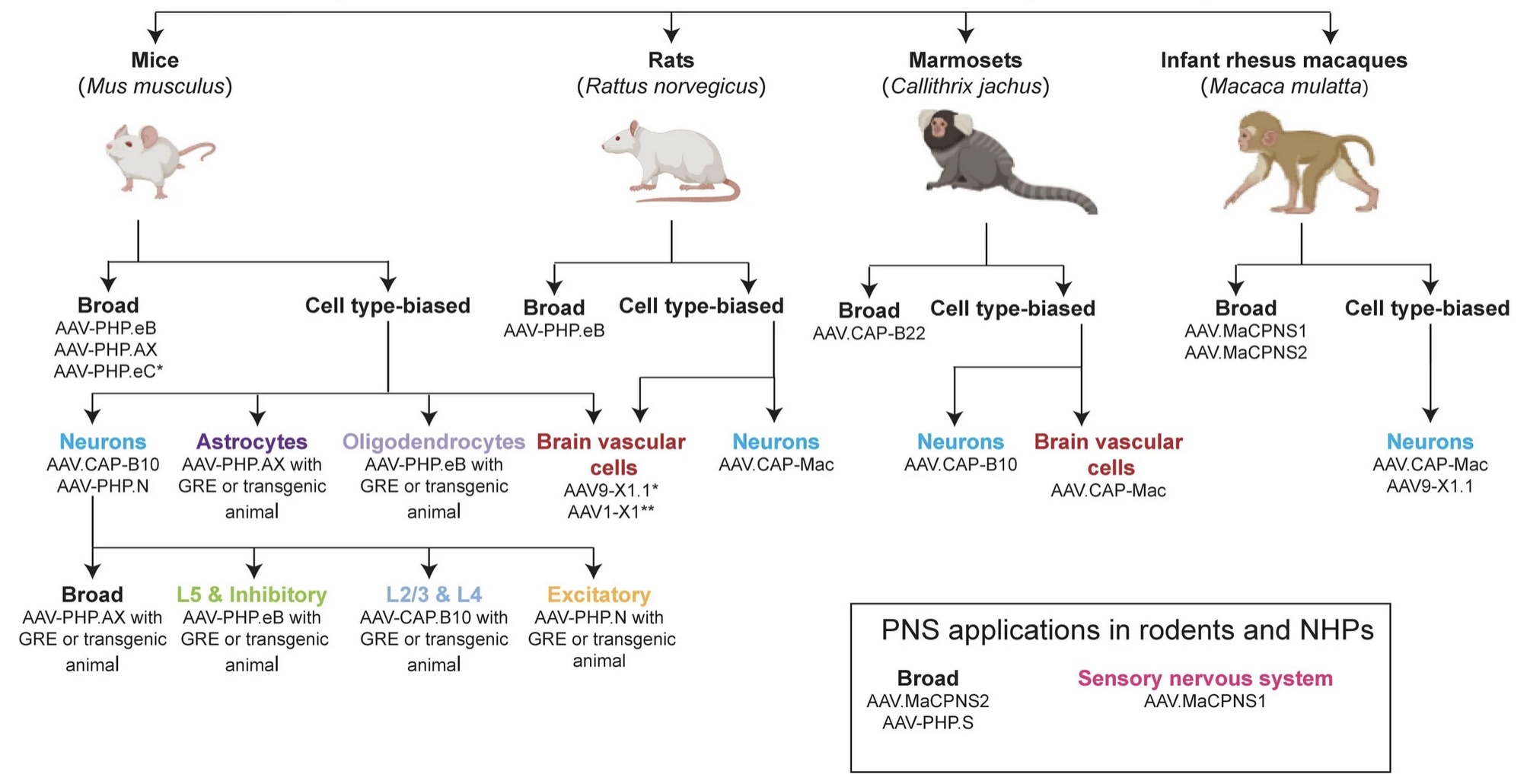Engineered AAV capsids with enhanced targeting of the nervous system after intravenous administration
Type: Molecular / Cellular,
Type: Other,
Keywords: AAV, Viral Vector, CNS, PNS, Mouse, Non-Human Primate

Engineered AAV capsids with enhanced targeting of the nervous system after intravenous administration
A toolkit of engineered adeno-associated virus (AAV) capsids developed in the Gradinaru lab at Caltech with enhanced potency for the central or peripheral nervous system after intravenous administration. These capsids enable efficient and non-invasive gene delivery across a wide variety of model organisms from mouse to macaque. Systemic AAVs may be chosen for broad cell type targeting or restricted infection to a single cell class, e.g. neurons or vasculature, and readily combine with cell-type specific enhancer or miRNA target site gene regulatory elements.
A searchable repository of >1000 published uses and their key metadata is available here: https://clover.caltech.edu/aav-repository (updated quarterly)
* Mouse
* Rat
* Marmoset
* Macaque
* Human brain organoids
* Human brain slice
* Unlocks non-invasive gene delivery
* Enables coverage of large and/or spatially dispersed structures
* Dosage equilibrates over blood volume for more uniform multiplicity of infection
* Regional control of expression remains difficult
* Requires greater amount of vector than direct injection to tissue of interest
* Greater exposure to the immune system and off-target tissues than direct injection to tissue of interest
Tim Shay, CLOVER Center Director
California Institute of Technology
TEAM / COLLABORATOR(S)
Viviana Gradinaru, Professor of Neuroscience and Biological Engineering, California Institute of Technology
FUNDING SOURCE(S)
* NIH PIONEER DP1NS111369
* NIH UF1MH128336
* NIH U24MH131054
* CZI Neurodegeneration Challenge Network
* NSF NeuroNex Technology Hub 1707316

